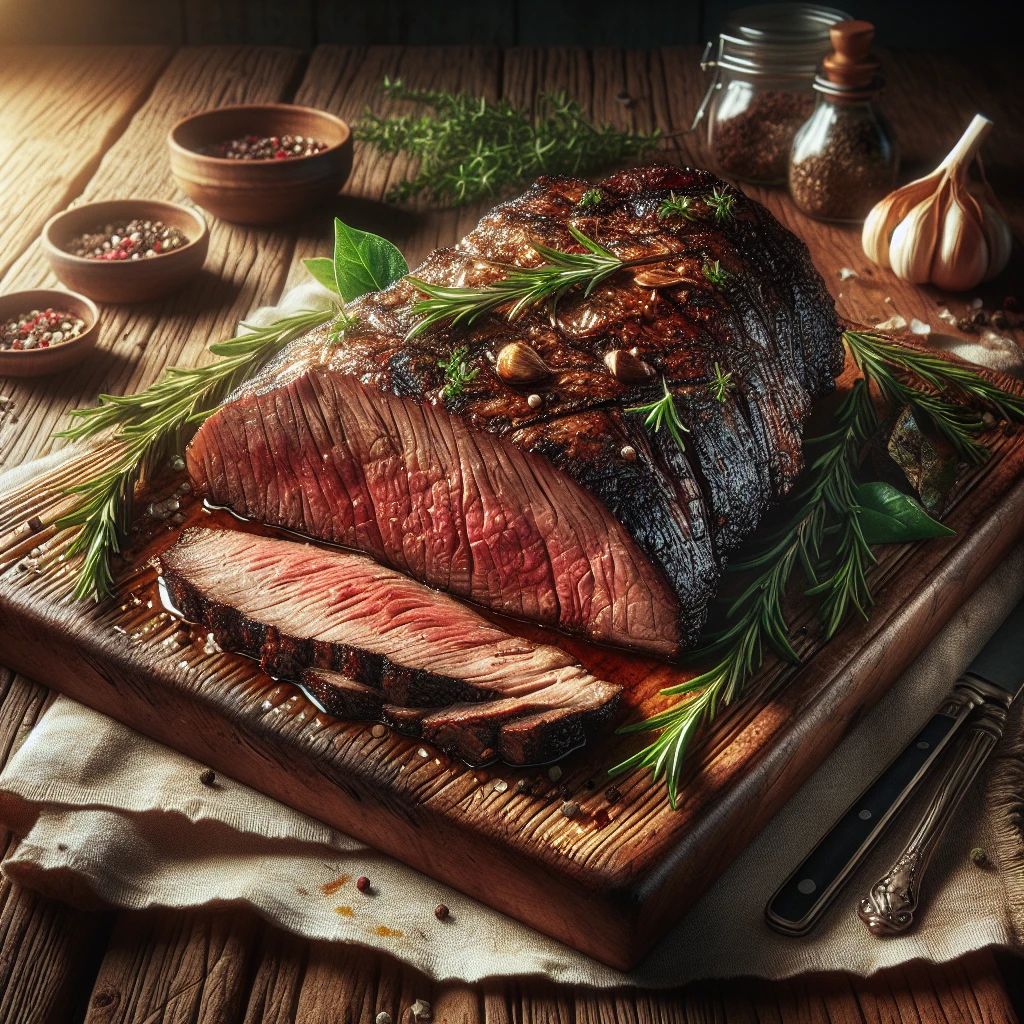
If you're looking to elevate your grilling game with a cut of meat that delivers both flavor and tenderness, this Heritage Grilled Tri-tip Roast is your ticket. It's the kind of dish that makes any barbecue feel special, yet it's surprisingly simple to prepare.
The star here is the beef tri-tip roast, known for its rich, beefy flavor and tender texture. It's a cut that holds up well to grilling. A bit of olive oil helps the spices adhere and adds a subtle richness. The kosher salt is crucial for drawing out the meat’s natural flavors. Black pepper brings a touch of heat. Garlic powder and onion powder provide a savory, aromatic base. Smoked paprika adds a smoky depth, while dried thyme offers a hint of earthiness.
This grilled tri-tip pairs beautifully with roasted vegetables or a fresh, crisp salad. For a classic touch, serve it with creamy mashed potatoes or a warm, crusty bread. A robust red wine, like a Zinfandel or a Cabernet Sauvignon, can complement the dish's flavors wonderfully.
Start by preheating your grill to medium-high heat. This is crucial to achieve a good sear on the tri-tip, locking in those flavorful juices. While the grill heats up, give your tri-tip roast a generous rub with olive oil. This step ensures that your seasoning sticks well and the roast doesn't dry out while cooking.
Next, season the roast with kosher salt, black pepper, garlic powder, onion powder, smoked paprika, and dried thyme. Make sure to cover all sides evenly with the seasoning to ensure every bite is packed with flavor.
Place the tri-tip on the grill; you'll want to sear each side for about 5 minutes. This searing step is key to developing a flavorful crust. Once seared, lower the grill temperature to medium-low. Continue cooking the roast for about 20-25 minutes. Turn it occasionally to prevent any one side from overcooking. Aim for an internal temperature of 130°F for that perfect medium-rare doneness.
Once cooked to your liking, remove the tri-tip from the grill. Let it rest for about 10 minutes. This resting period allows the juices to redistribute, ensuring a juicy, tender slice. When ready to serve, slice the meat against the grain; this shortens the muscle fibers and makes each bite more tender.